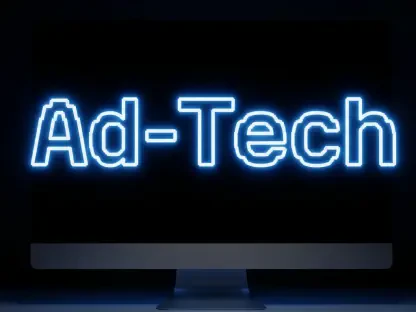In the dynamic, ever-evolving world of digital advertising, businesses are in a constant race to innovate and captivate their target audiences. Display advertising, a stalwart in the online ad arena, continues to prove its mettle through the years. As we delve into the best display ads of 2024, we’ll explore what worked, why it worked, and draw insights from expert opinions to understand overarching trends and themes that stood out this year. The analysis provides a comprehensive look at the elements contributing to effective display advertising, highlighting exemplary campaigns, trends, and best practices.
Enduring Relevance of Display Ads
Display advertising, one of the oldest forms of online ads, maintains its relevance due to its efficacy in building brand awareness, driving website traffic, and generating leads. This important method of advertising is far more than just banner ads; in 2024, the spending on display ads surpassed $100 billion, yielding around 14 billion impressions. This significant expenditure underlines its importance in the digital advertising ecosystem. Unlike search engine marketing, where ads are driven by user queries, display ads strategically place visual content across relevant websites and apps, engaging users with imagery, animations, and compelling copy.
In 2024, expert insights from industry leaders such as George Todorov of Create and Grow and Mimi Nguyen of Cafely provided valuable perspectives on standout campaigns and their effectiveness. By understanding the nuances of successful ads, advertisers can craft strategies that resonate with their audiences. This approach draws from the strengths of various ad formats, ensuring a broad yet targeted reach across the digital landscape.
Apple: Effective Minimalism
Apple’s advertising epitomizes effective minimalism, a strategy that has kept the company at the forefront of the viewer’s mind. Their display ads feature simple, sleek designs with clever headlines and clear calls-to-action, a reflection of their well-known design philosophy. Historically, Apple’s advertising campaigns, such as the iconic “1984” TV spot and the “Think Different” campaign, showcased their mastery in creating memorable and minimalistic marketing. Their consistency not only in product design but also within advertising content continues to yield positive results.
By focusing on clean visuals and direct messaging, Apple ensures that their ads cut through the noise. The combination of high-quality imagery and succinct copy means that viewers can quickly grasp the message, fostering better brand recall. This strategy highlights Apple’s ability to maintain brand prestige while effectively communicating the intended message.
Nike: Interactive Engagement
Nike harnessed the power of interactive engagement for their Super Bowl campaign, capturing and retaining user attention through meaningful involvement. The campaign allowed fans to vote on their favorite Super Bowl plays, with these ads appearing across multiple platforms including the Google Display Network, ESPN, and YouTube. By evoking nostalgia among viewers and prompting participation, Nike could significantly increase engagement.
This well-thought-out campaign was highly successful, achieving a 40% higher click-through rate (CTR) compared to standard display ads and tripling the return on ad spend (ROAS). Interactive content like this not only draws users in but also encourages them to take desired actions, making it a powerful tool in digital advertising. Nike’s strategy underscored the effectiveness of interactive display ads in enhancing user experience and driving engagement metrics.
Airbnb: Brand Recognition
Airbnb’s innovative approach to brand recognition paid off with a display ad featuring its logo on a dog’s nose. This creative and visually striking ad conveyed the availability of pet-friendly accommodations, cleverly leveraging viewers’ cognitive satisfaction from solving the visual “puzzle.” This playful tactic enhanced recall and engagement, illustrating the impact of immediately recognizable and creative content.
The ad’s success highlighted how aligning visuals with a core aspect of the brand—in this case, pet-friendliness—can create a memorable impression. Engaging users on an emotional level through imagery and messaging ensures that the brand stays top-of-mind. This strategy also demonstrated Airbnb’s commitment to highlighting unique selling points through clever and engaging advertising.
Gucci: Shoppable Ads
Gucci’s shoppable ad campaign, perfectly timed with Fashion Week, integrated direct purchasing capabilities within the ads, thus serving a dual purpose of brand promotion and sales facilitation. These ads were run on platforms like Instagram and Vogue, leading to a fourfold increase in conversion rates compared to traditional display ads. Gucci’s approach underscored the efficiency of blending ad content with immediate shopping options, catering to the modern consumer’s desire for convenience.
This strategy provided a seamless shopping experience, making it easy for potential customers to transition from ad engagement to purchase. Shoppable ads help bridge the gap between discovery and conversion, allowing brands to capitalize on the high intent of viewers who interact with their ads. Gucci’s campaign highlighted the importance of integrating e-commerce capabilities within display advertising to drive business results effectively.
Royal Match: Gamification
Royal Match employed gamification to drive both downloads and engagement, inviting users to play the game within the ad itself. This strategy, though potentially intrusive, proved to be highly effective. Within platforms like Facebook and TikTok, Royal Match achieved over 300 million downloads and substantial revenue per download. By incorporating an element of gameplay directly into the ads, they enticed users to interact with the content in a fun and engaging way.
Despite the risk of audience fatigue from repetitive or intrusive ads, Royal Match’s approach demonstrated that gamification could captivate and retain user interest. This technique taps into the natural human affinity for games and challenges, making ads not only more interactive but also more memorable. For businesses aiming to drive app downloads and user participation, gamified ads offer a compelling strategy.
TeslInteractive Car Configurator
Tesla’s innovative strategy of launching an interactive car configurator right before the summer travel season paid off handsomely. This tool allowed users to customize their vehicles within the ad, engaging potential buyers on automotive websites and the Google Display Network. The intuitive and personalized experience led to a 45% increase in test drive registration requests, thereby boosting both online and offline engagement.
The success of this campaign highlighted the dual benefits of interactive ads—enhanced user experience and increased conversion rates. By allowing users to visualize and configure their ideal car, Tesla not only captivated their audience but also streamlined the decision-making process. This strategy underscored the importance of interactivity in creating an engaging and effective digital advertisement.
The New York Times: Text-Only Ads
The New York Times demonstrated the power of simplicity with their text-only ads, which emphasized compelling headlines and copy. The clean, black-and-white design of these ads resonated with the brand’s ethos and effectively guided readers through a seamless subscription journey. This minimalistic approach underscored that visually stripped-down ads could capture and retain reader interest without compromising on impact.
This approach tapped into the elegance of understated design, proving that high-quality, attention-grabbing content does not always require intricate visuals. Instead, the focus on thought-provoking text and coherent messaging provided viewers with a clear understanding of the value proposition. The effectiveness of The New York Times’ text-only ads speaks to the strength of well-crafted copy in digital advertising.
Airbnb: AI-Personalization
Airbnb’s pioneering use of AI-driven personalization in their ad campaign tailored advertisements based on users’ browsing histories. This strategy, deployed on platforms like Lonely Planet, provided tailored travel recommendations, significantly enhancing user engagement by 50% and booking conversions by 35%. The use of AI to create personalized ad experiences underscored the benefits of targeted, data-driven advertising.
By leveraging AI, Airbnb was able to deliver highly relevant content to users, thus enhancing the likelihood of interaction and conversion. Personalization fosters a connection between the brand and the consumer, making ads appear more as helpful suggestions rather than intrusive promotions. This campaign highlighted the future potential of AI in revolutionizing personalized digital marketing strategies.
Slack: Humor
Slack effectively used humor in their display ads to capture and maintain audience interest. By featuring whimsical imagery such as kittens and rainbows, Slack’s ad highlighted the playful side of office communication while conveying the benefits of their platform in decluttering inboxes. This humorous approach resonated well with viewers, effectively communicating the desired message in a memorable manner.
The ad’s success demonstrated that humor could be a powerful tool in digital advertising. When used appropriately, humor can humanize a brand, making it relatable and enjoyable for viewers. Slack’s campaign illustrated how lighthearted content could enhance message retention and create positive associations with the brand.
Louis Vuitton: Award Season Luxury Campaign
Louis Vuitton capitalized on the glamorous allure of the Oscars and Grammys for their luxury campaign, targeting high-end consumers through contextual ads in publications like GQ. The timing of the campaign, coupled with its high-end placement, resulted in a 20% boost in brand recall and a 5:1 return on ad spend (ROAS). This well-timed and contextually relevant advertising strategy underscored its efficacy in reaching and impacting targeted audiences.
By aligning the campaign with prestigious events, Louis Vuitton was able to leverage the heightened consumer interest and media coverage surrounding these occasions. The luxury brand’s focus on contextual relevance ensured that their ads resonated with the right audience at the right time. This campaign highlighted the importance of timing and context in designing impactful and effective display ads.
Key Elements of Successful Display Ads
Successful display ads across these diverse campaigns share key elements such as compelling visuals, clear and concise messaging, strong calls to action, targeted audiences, and mobile optimization. Each element plays a crucial role in ensuring that the ads not only capture but also sustain user attention. High-quality, relevant images and videos can draw viewers in, while concise messaging ensures that the ad’s value proposition is understood within seconds.
A strong call to action (CTA) guides viewers toward the desired action, whether that be visiting a website, making a purchase, or registering for a service. Ads that are carefully targeted based on demographics, interests, and online behavior are more likely to resonate with the intended audience, enhancing engagement and conversion rates. Moreover, with the ever-increasing use of mobile devices for internet access, optimizing display ads for mobile viewing is essential to maximize reach and effectiveness.
By consistently incorporating these elements, advertisers can create impactful campaigns that drive results. Understanding and leveraging these best practices provide a strong foundation for crafting successful display ads that achieve business objectives.
Summary of Findings
In the fast-paced, ever-changing world of digital advertising, businesses are continuously striving to innovate and capture the attention of their target audiences. Display advertising, a long-time staple of the online advertising landscape, has consistently proven its value over the years. As we look at the best display ads of 2024, we’ll examine what strategies succeeded, why they were effective, and draw insights from experts to identify the key trends and themes that emerged this year.
This analysis offers a thorough look into the factors that contribute to successful display advertising, showcasing outstanding campaigns, prevailing trends, and best practices. Understanding these elements is essential for businesses aiming to optimize their ad strategies and enhance engagement with their audience. With the increasing competition and ever-evolving digital ad space, staying ahead of trends and utilizing proven tactics is crucial for sustained success. From creative visuals to targeted messaging, the best display ads of 2024 exemplify the innovative approaches and strategic thinking that define effective advertising today.









